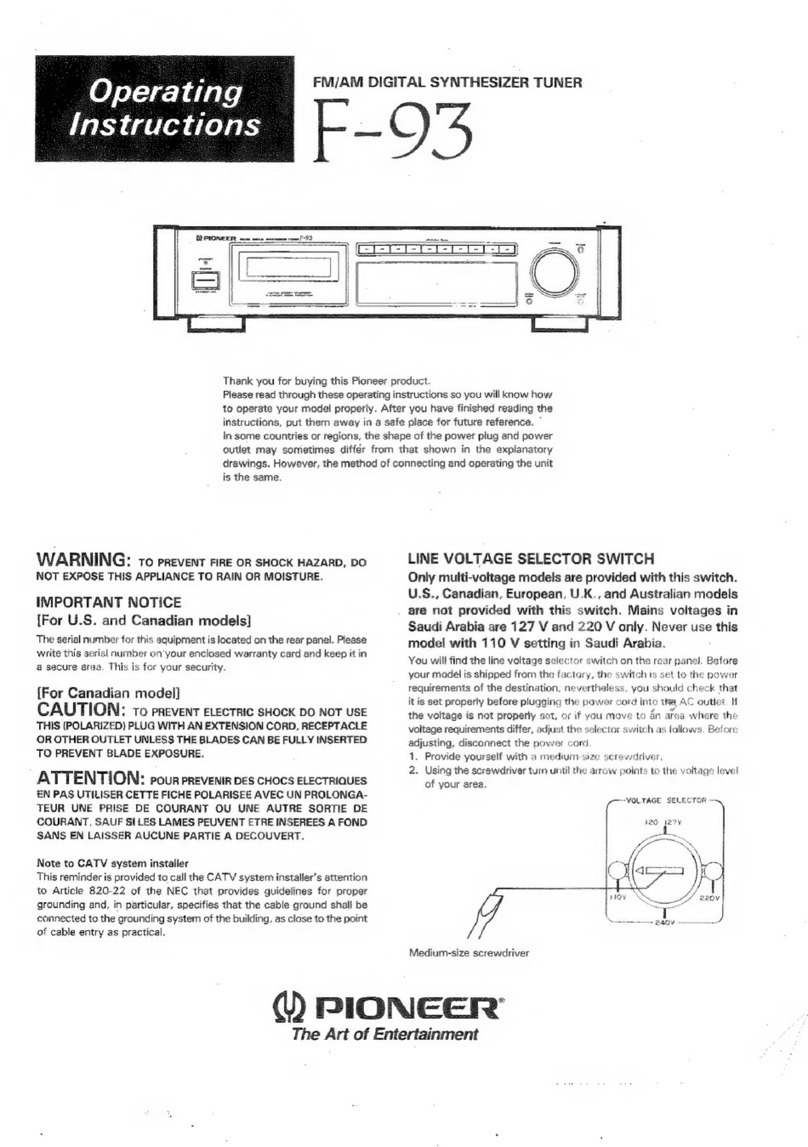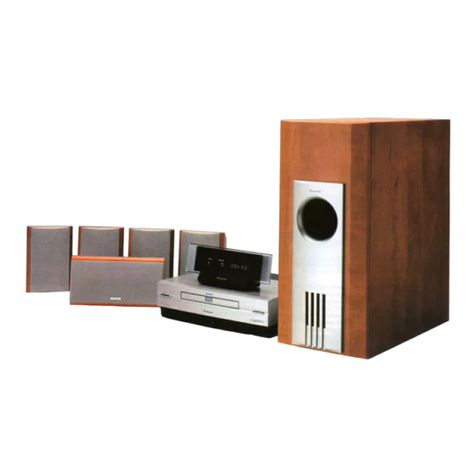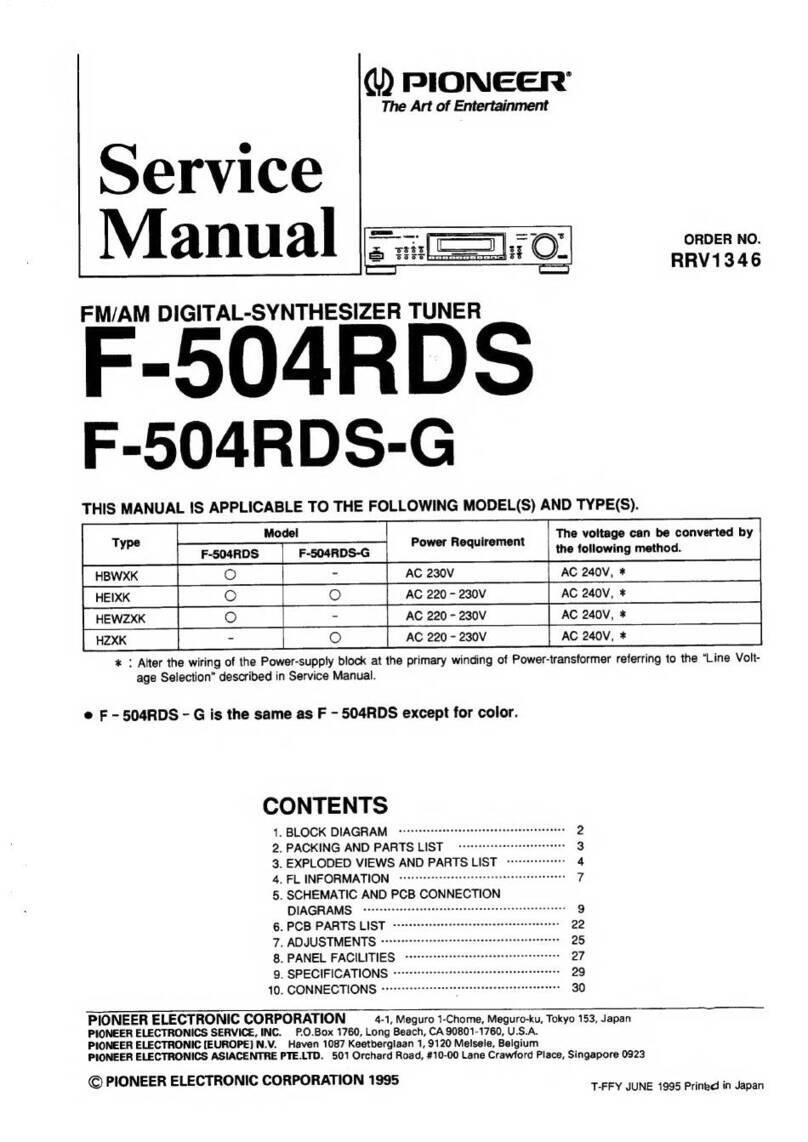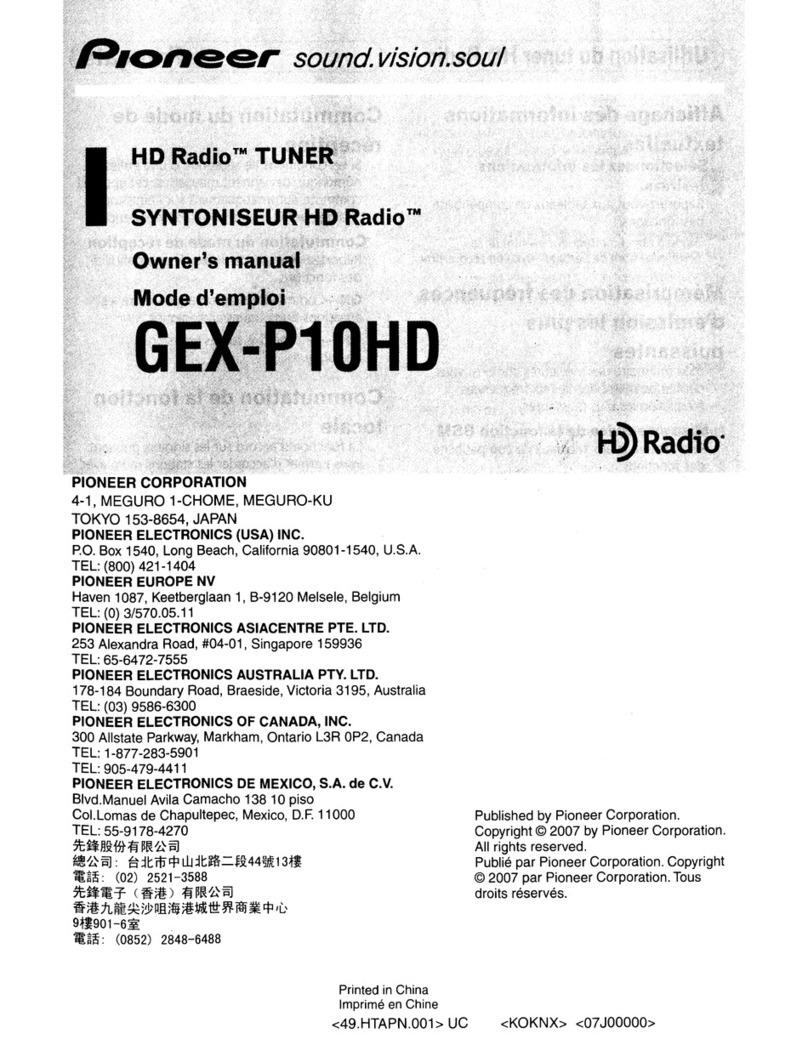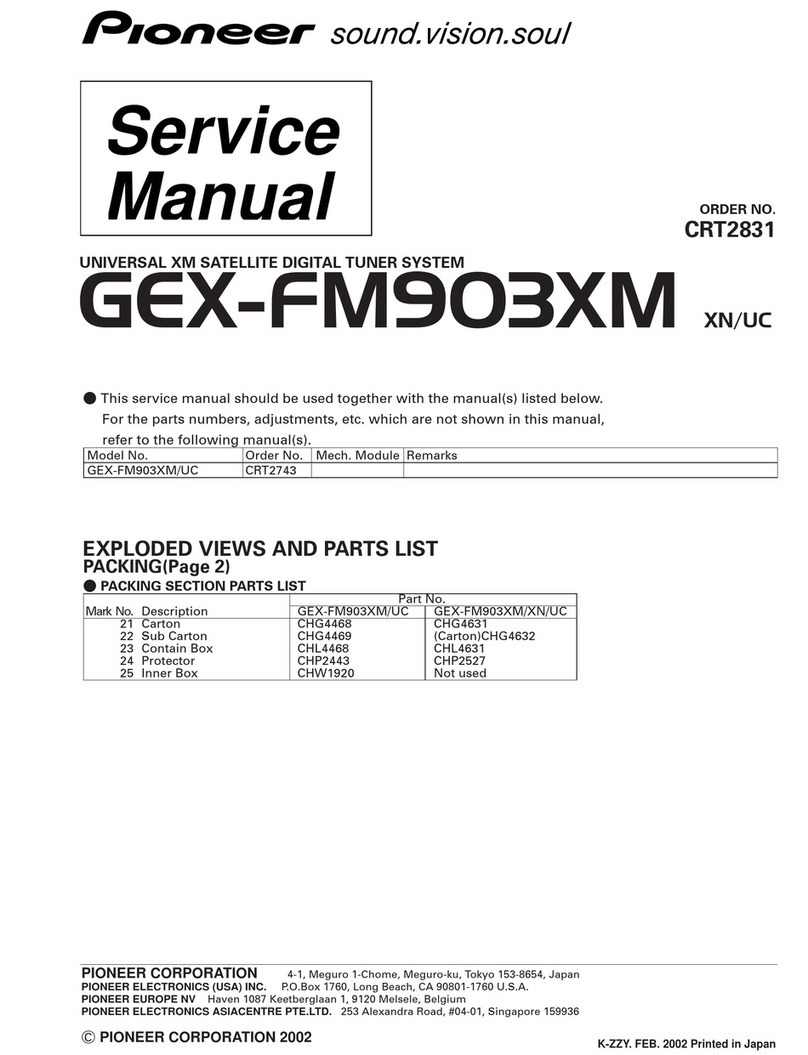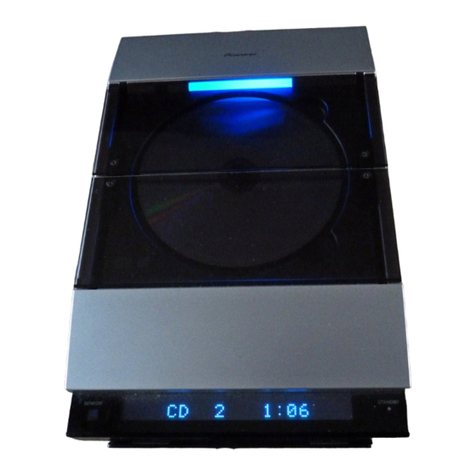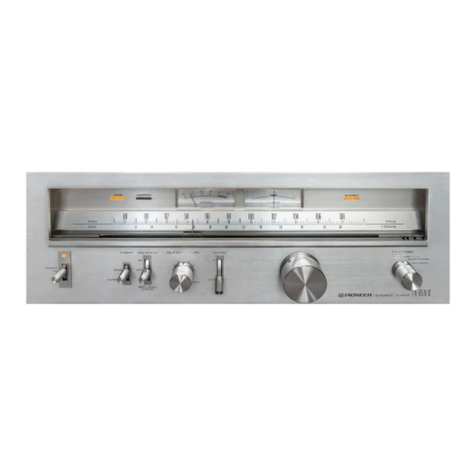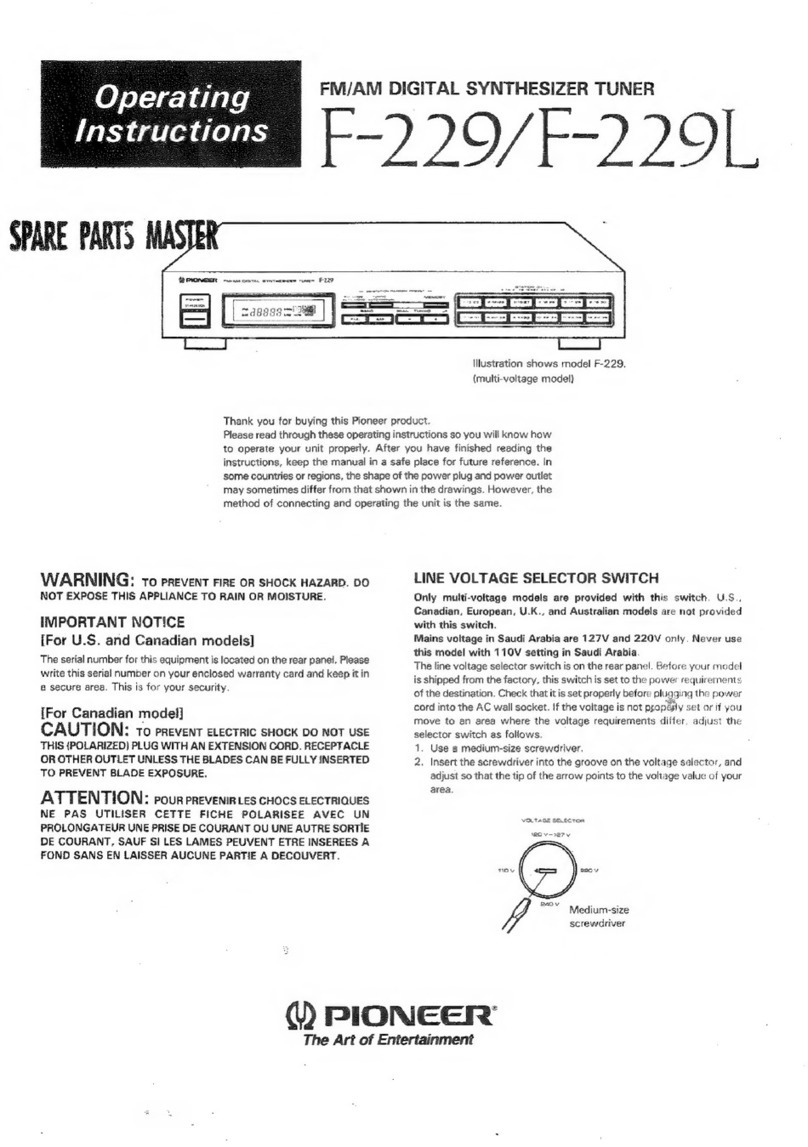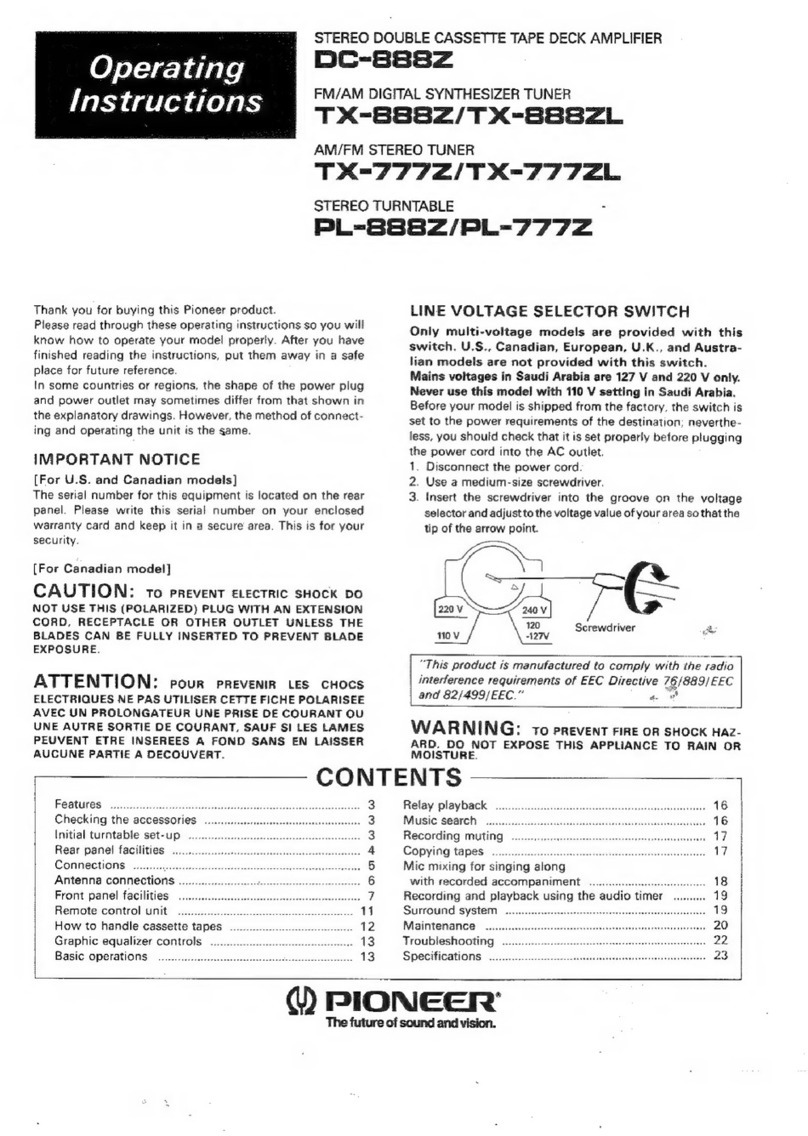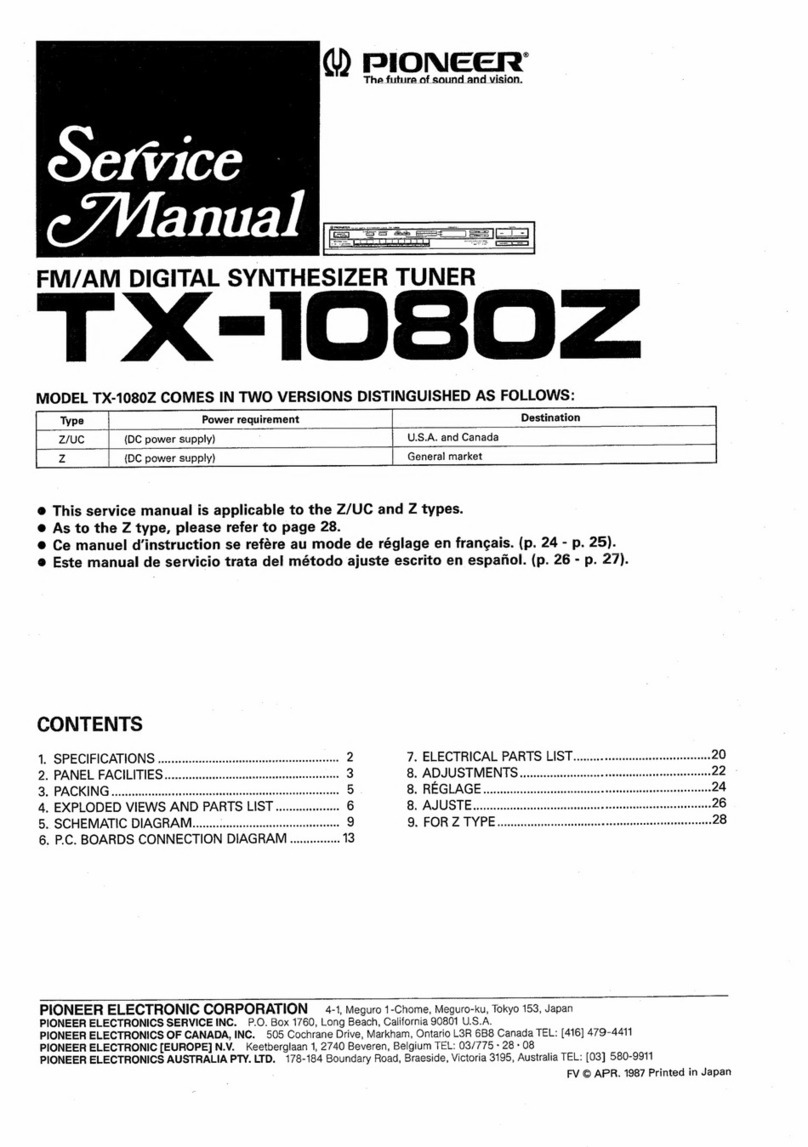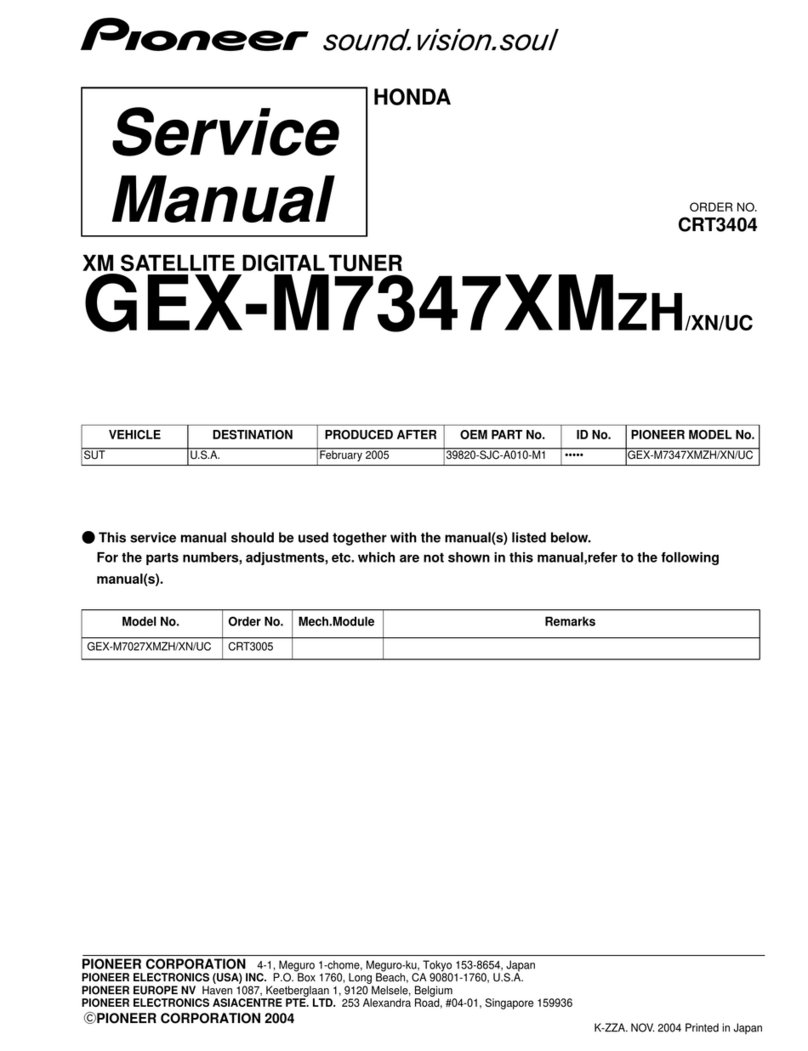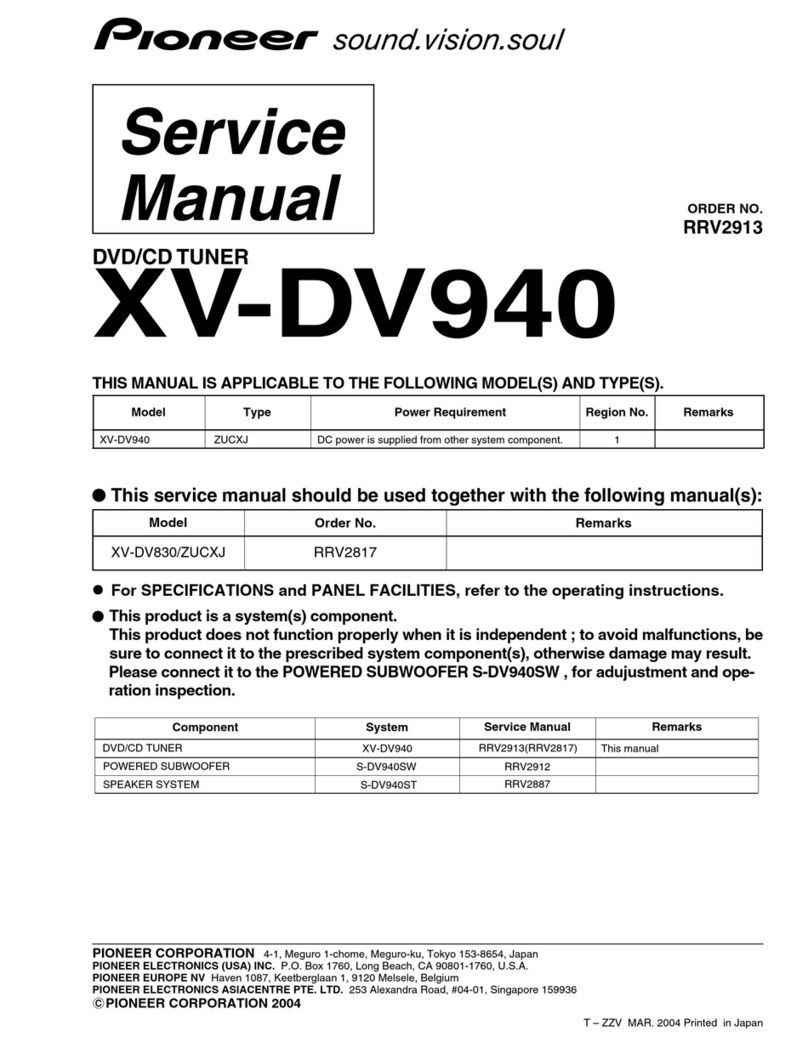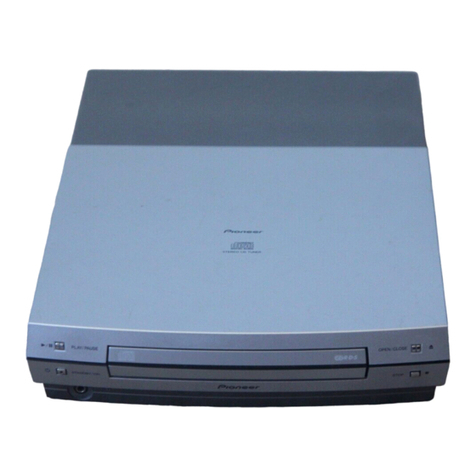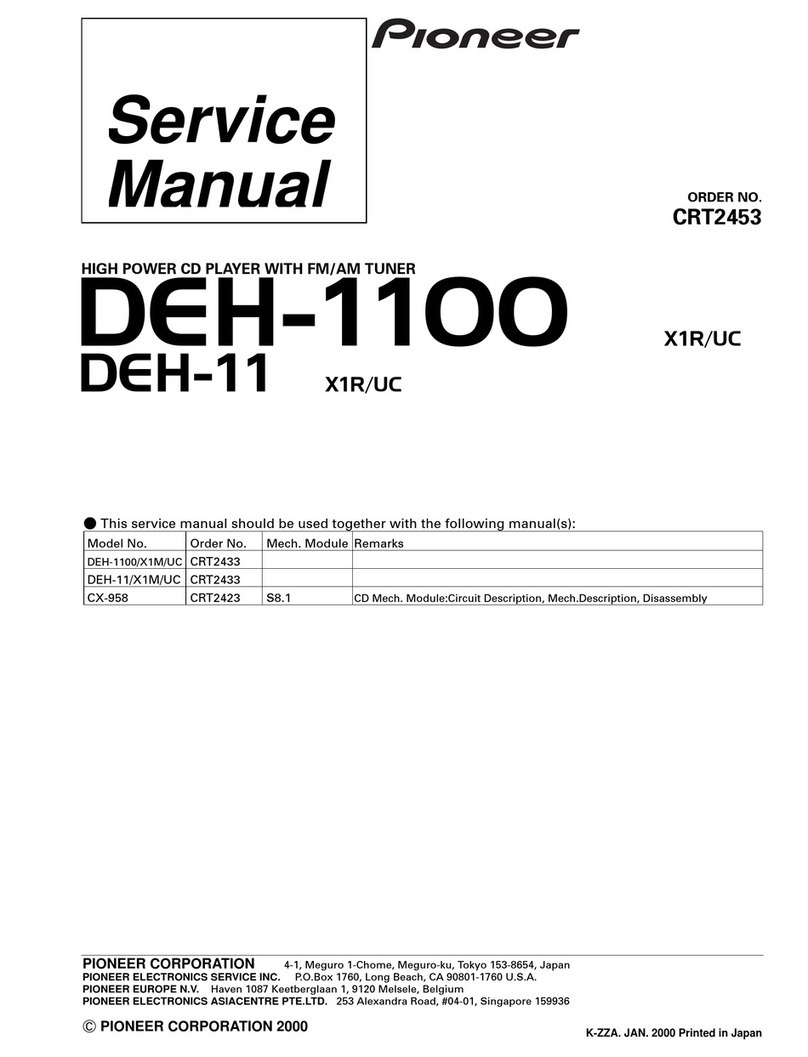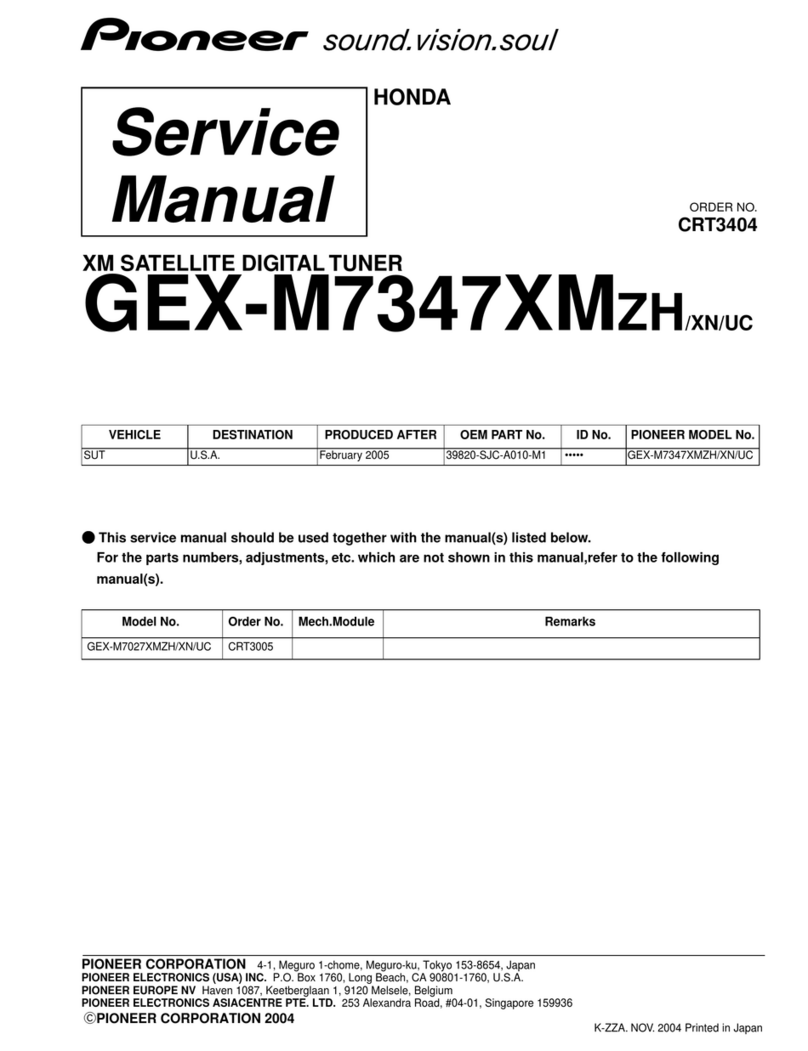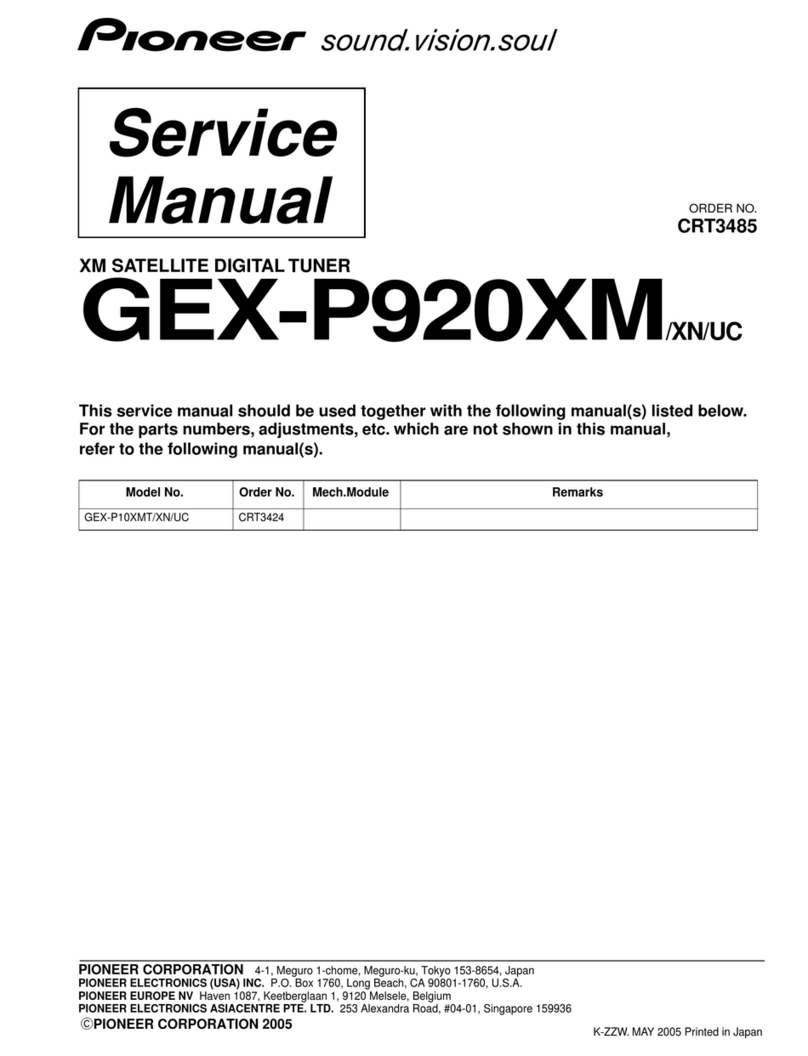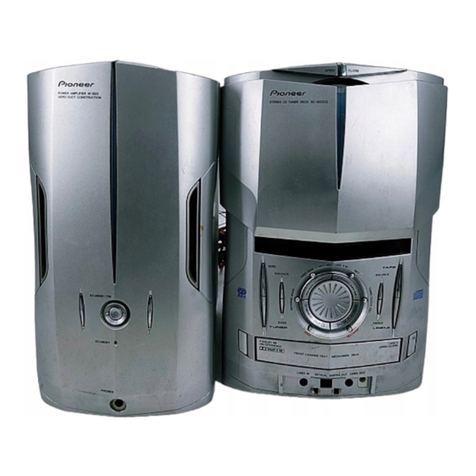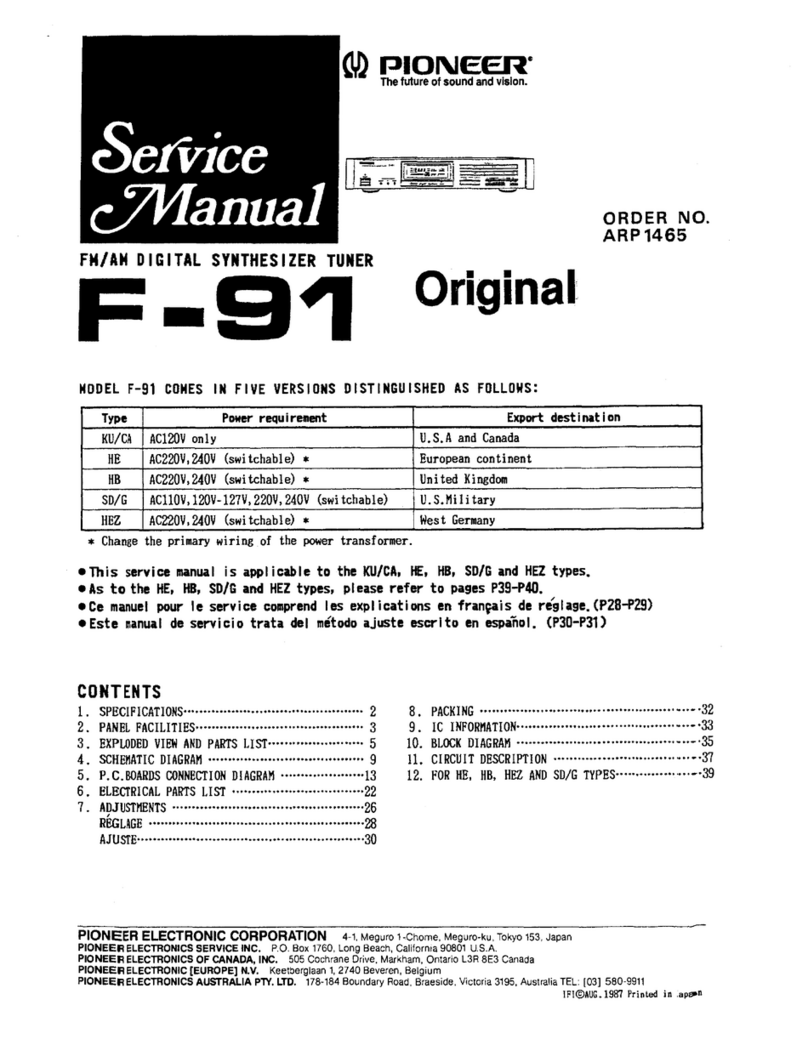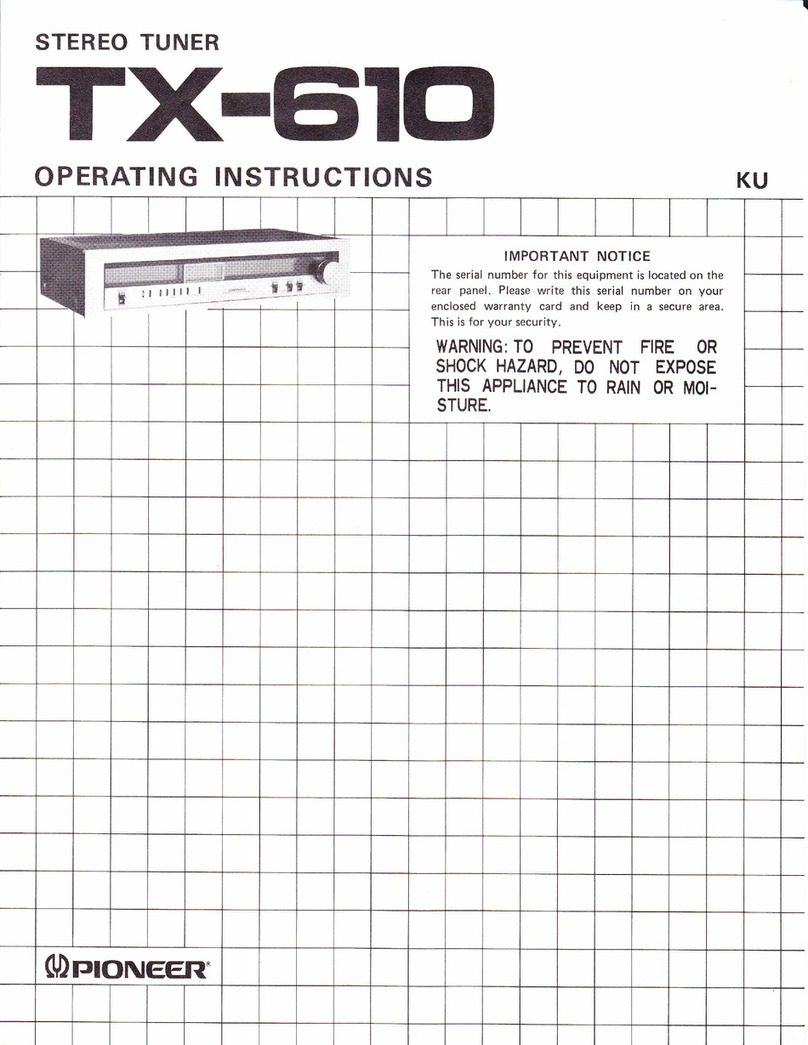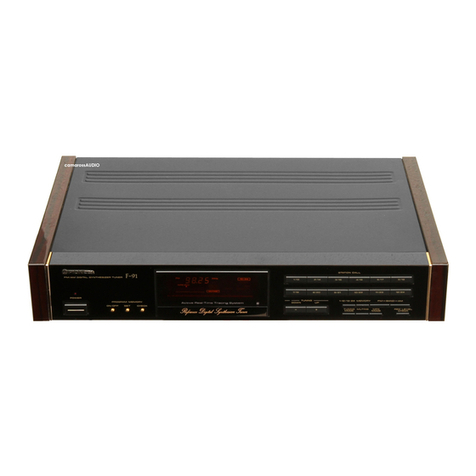the 19 kHz-pilot signal is picked up by
the T14 which is tuned to 19 kHz, and
becomes a pulsating current.of 38 kHz
after rectified by the diodes D11 and D12
on the secondary side of the T14, and
then applied to the Q11.
Transformer T15i which is tuned to 38 kHz,
is provided to the collector of the Q11,
and the 38 kHz pulsating current is for-
med a cleaned sine wave 38 kHz switching si-
gnal and is applied to the switching circuit.
The transistor Q12 is connected to the
emitter of the Q11, permitting the stereo
indicator lamp to turn on and off. On the
other hand, the Q1g functions as emitter'
follower to the L + R signal or L - R signal,
providing a signal to the switching circuit.
The emitter of the QtO it provided with
sub-boost circuit consisting of C7g and T13
for improving separation. This signal is given
a time division and fed to the low-frequency
amplifier section as a signal for L arid
R channels.
MONO BROADCAST RECEPTION
When a mono broadcast is received, there is
no 19 kHz component in the signal that
has been ratio detected, and thus, the Q11
and Q12 do not function. Therefore, the
stereo indicator lamp does not light, allowing
the signal to pass through the diodes of
the switching circuit and fed to the low-
frequency section. Also, if the selector
switch is set to FM MONO, the primary
side of the T15 is opened disabling the Q11.
Therefore, a switching signal cannot be
formed even if 19 kHz signal is applied,
which passes through the switching circuit.
FM AUTO SWITCHING AND MUTING
SWITCH
When the MUTING switch is set to OFF,
and the selector switch is set to FM MONO,
the primary side of the T15 forms a tank
circuit, making a switching signal of 38 kHz
out of 19 kHz pilot signal and provides
the switching signal to the switching circuit.
If the input level of the stereo signal fed
from the antenna is low, the negative
voltage rectified by the D4 on the secondary
side of the T6 is also low. Thus, the
Q9 is turned on, and the base voltage of
the Q11 connected to the collector circuit
of the QS becomes zero, not allowing
the 38 kHz to be amptified and the stereo
signal is not given a time division and
therefore, the signal is received as a mono
signal. When the MUTING switch is set to
ON, the collector of the Q9 is connected
to the Q1g, and thus, when the input fed
from the antenna is low, the Qo is also
T)c6clcl
turned on, Iowering the base voltage of
the Q16 to turn it OFF, and thus the ratio
detected signal does not appear at the
output terminals.
AM TUNER SECTION
This section consists of four transistors Q7,
QS, QS and Q6. The AM signal fed from
the ferrite loopstick antenna is applied to
the Qg, where the signal is converted to IF of
455 kHz and picked up at the Tg. The
frequency conversion circuit is a separate type
circuit consisting of the QA and QZ for
obtaining more stabilized frequency.
The IF amplification, which is made by the
Qg and Q6, is detected by the D16 on the
secondary side of the T11. The AGC controls
the voltage by applying the detected signal
to the base of the Qg. The diode Dg is
provided to obtain the necessary voltage for
the signal meter, and the D7 and Dg for
guarding against excessive input.
AF UN|T(AWM-O02)
CROSS.TALK CANCEL AMPLI FI ER
SECTION
The output signal from the TUNER UNIT
(AM signal, FM mono/stereo signals), which
is selected by the SELECTOR switch S1,
is applied to the AF UNIT. The output voltage
of the TUNER UNIT is amplified up to
a predetermined level by the QS (Qa) and
QS (QO). The QS and Q4 function as a
differential amplifier for FM stereo signal,
and the separation is excellent with cross
talk cancelled by means of the separation
control volume (VRl). The Q5 (Q6) is an
emitter-follower, assuring a low output
impedance without receiving interference from
shielded wires.
The output signal from AM UNIT is connected
to the output terminals after passing through
the level controls for AM and FM, and the
selector switch. The output signal of the
AF UNIT, divided by the resistorg is provided
to the TAPE REC .terminals.
POWER SUPPLY SECTION
The power supply is rectified by the D2 and
D3, and the DC is supplied to the low-frequency
section through the ripple filter of ihe Q2,
and the TUNER UNIT through the stabilizing
unit consisting of the Q1 and D1. Thus,
a better S N ratio and stabilization is a^ssured.
